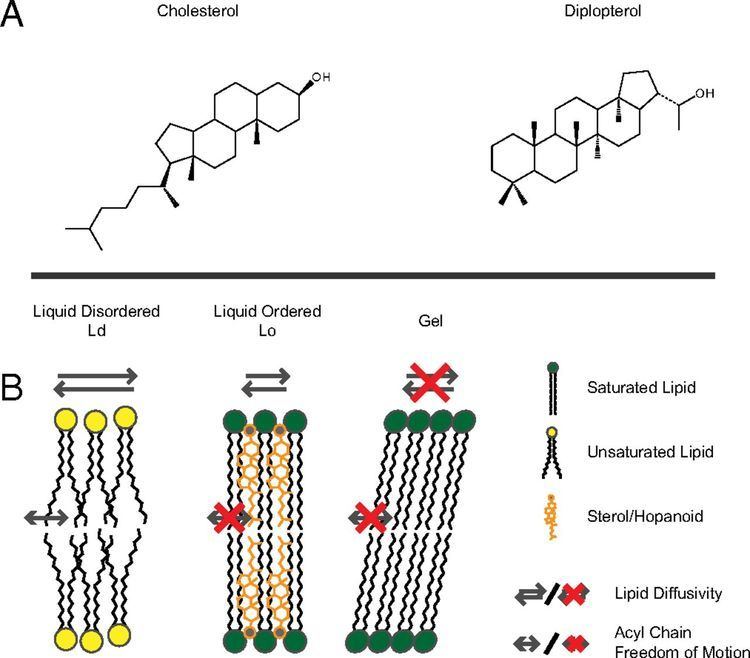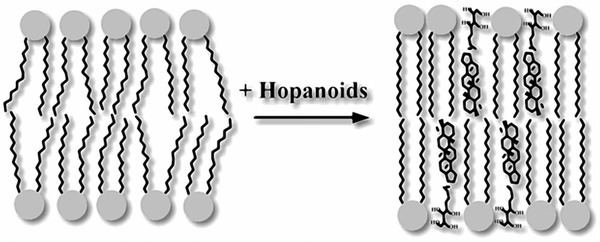 | ||
Hopanoids are natural pentacyclic compounds (containing five rings) based on the chemical structure of hopane. The first known triterpenoid of the class, hydroxyhopanone, was isolated by two chemists at The National Gallery, London working on the chemistry of dammar gum, a natural resin used as a varnish for paintings. The name hopane was derived from the genus Hopea (a source of the resin) itself named after John Hope, the botanist. Since this first finding, however, hopanoids have been found to be present in nature in vast amounts as components of bacteria and other primitive organisms. A range of hopanoids are found in petroleum reservoirs, where they are used as biological markers. Hopanoids are not detected in archaea.
Contents
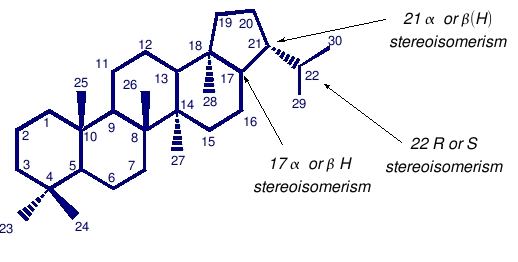
Biological role
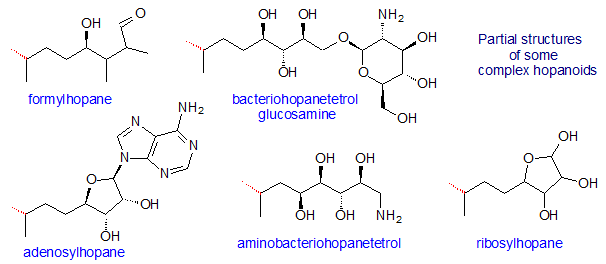
Hopanoids modify plasma membrane properties, like fluidity and formation of liquid ordered domains, influencing membrane permeability, rigidity and other characteristics in bacteria, similarly as sterols (like cholesterol) do in eukaryotes. This relationship between biochemical structure and cellular function can be seen in the similarity of the basic structures of diploptene, a hopanoid compound found in some bacterial cell membranes, and cholesterol, a sterol compound found in eukaryotic membranes. In many bacteria hopanoids may play roles in the adjustment of cell membrane permeability in adaptation to extreme environmental conditions. They are formed in the aerial hyphae (spore bearing structures) of the prokaryotic soil bacteria Streptomyces, where they are thought to minimise water loss across the membrane to the air. In the actinomycete Frankia, the hopanoids in diazovesicle membranes likely restrict the entry of oxygen by making the lipid bilayer more tight and compact.
Hopanoids in paleobiology

Hopanoids are probably the most abundant natural products on earth and are present in the organic matter of all sediments, independent of their age, origin or nature and are useful molecular fossil biomarkers in reconstruction of early evolution and geology.
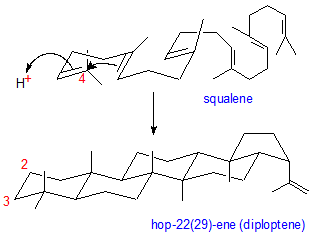
Hopanoids, including 2-alpha-methylhopanes from photosynthetic bacteria (cyanobacteria), were discovered by Roger Summons and colleagues as molecular fossils preserved in 2.7 Gya shales from the Pilbara, Australia. The presence of abundant 2-alpha-methylhopanes preserved in these shales may indicate that oxygenic photosynthesis evolved 2.7 Gya, well before the atmosphere became oxidizing. However it was demonstrated that Geobacter sulfurreducens can synthesize diverse hopanols, although not 2-methyl-hopanols, when grown under strictly anaerobic conditions.
